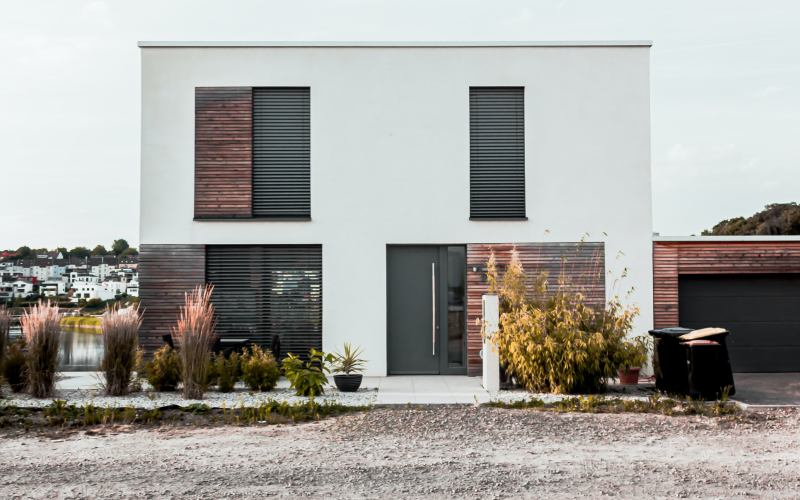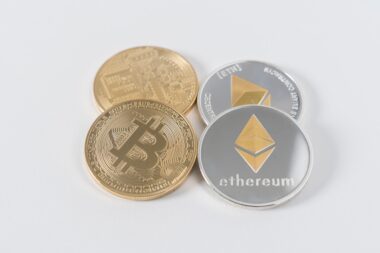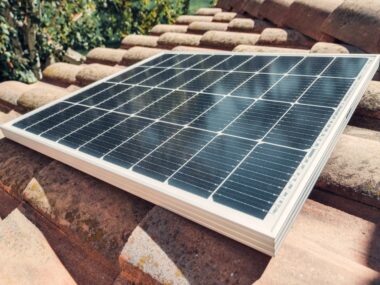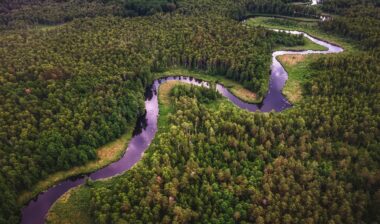The secret’s out. Fossil fuels are over, not to mention increasingly expensive, and renewable energy is in. Ok maybe fossil fuels aren’t over but we need to wean ourselves off them ASAP. With our 2030 climate change goals right around the corner, moving to renewable energy is one of the key ways we can reduce our carbon and greenhouse gas emissions. Globally, we invested 365.9 billion in renewable energy in 2021. But what does that mean for the average person? What’s the best way to get access to renewable energy? We breakdown the best renewable energy investments for your home, calculated by energy use and breakeven time.
Types Of Renewable Energy

Solar
Solar energy uses solar panels to capture sunlight and convert it into electricity for use at home.
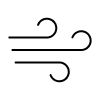
Wind
Wind energy works by using the wind to turn blades on a turbine, which spins a generator and creates electricity for your home.

Water (Hydro)
Water, or hydro energy, is one of the most efficient types of renewable energy, converting 90% of energy into electricity. It’s similar to wind energy, but uses water instead to spin a turbine to create electricity.

Geo-Thermal
Geothermal uses heat pumps and a looping pipe system to tap into the heat below the earth to warm your home in one of the most efficient ways possible.
How To Get Renewable Energy
From Your Energy Provider
Some areas offer renewable energy straight from the grid. In the US and Canada, 18-20 percent of electricity, and growing, comes from renewable energy. If installing a whole renewable energy system in your home isn’t an option, knowing a percent of your energy comes from renewable energy can be somewhat comforting.
To Buy Or Not To Buy
In reality, it makes more sense for homeowners rather than renters to invest in a renewable energy source, or sources, for your home. Although, renters can still make use of some smaller scale renewable energy sources and DIYs.
| Pros | Cons |
| Avoid Rising Energy Costs Energy costs have been rising steadily for the past few years (350% between 2020-2022). Generating your own energy can help reduce how much you need from expensive and environmentally damaging fossil fuels. | High Initial Investment Most new energy installs, renewable or not, tend to come with a high upfront cost. With most solutions requiring professional installation expect a starting cost in the tens of thousands. |
| Increase House Value Much like other forms of home improvements, renewable energy can increase the value of your home. Installing solar panels can increase the value of your house by 3-4 percent alone. | Long Term Breakeven Point Renewable energy systems pay off best if you invest early and stay in the home past your breakeven investment point. Once you’ve saved past that point, your energy is essentially “free”. |
| Sells A House Faster A house with low to no energy bills is an attractive prospect in this volatile energy market. Studies show that houses with solar panels in particular tend to sell faster than those without. | Maintenance Costs Add Up Over Time Unfortunately, renewable energy systems aren’t just a set it and forget it kind of thing. Parts need replacing and maintenance just like other energy systems. As the system ages and efficiency decreases, you might also see an increase in maintenance costs. |
| Reduce Your Carbon Footprint Those of us that are environmentally minded can reduce our carbon footprint through the energy sources we use. Solar, wind, hydro and geo energy produce a fraction of emissions compared to fossil fuels, even as low as zero emissions in some cases. | |
| Provides Uninterrupted Power Weather-related power outages have increased by 78% in the last ten years. Generating your own renewable energy can help you avoid future power outages caused by increasing natural disasters. | |

Investing In Solar Energy
Solar energy is one of the most popular types of home renewable energies. And for good reason. Solar panels are relatively easy to install as a starter home renewable energy project. You only need 4 hours of sunlight a day for solar panels to work, which most areas offer. Sorry parts of Norway and Alaska.
How Much Does Solar Energy Cost?
The cost can vary depending on if you want to install them yourself, or hire a professional, which can cost between $20,000-$30,000. To calculate if solar energy is a good investment for your home, you first need to know how much you usually spend on energy. If you’re able to offset the cost with solar energy within a few years, then it might be a good option for you.
The average Canadian household uses 11,135 kilowatt hours (kWh) of electricity each year. The average cost of electricity is $0.179 per kWh. So, the average Canadian household spends almost $2,000 a year on electricity. In Ontario the cost of installed solar energy is approximately $2,340-$2,590 per kW.
At a cost of approx. $22,000 to install an equivalent solar panel system, it’ll take about 11 years to breakeven. In Canada, you can get up to $5,000 back through a grant, lowering your breakeven time to 8.5 years.
If you’ve just moved into a house and plan to be there for 10+ years, or sell quicker and get a higher value, then solar panels could be a good option for you.
For more information on solar energy, check out Are Solar Panels A Good Investment?

Investing In Wind Energy
Wind energy is another popular type of home renewable energy, particular for those in rural areas. Unlike giant wind farms, small wind turbines producing between 50 -100 kW of electricity, are designed for use at home or on farms. You can even go smaller with micro wind turbines producing less than 1 kW of electricity to power things like batteries or fencing.
You’ll need to have an annual wind speed of at least 9-10 mph or 14.4-16.2 km/h for a wind turbine to work properly. You can use wind maps (Canada and USA) to find out the wind speed in your area. You also need to make sure wind turbines are allowed in your area.
Some places require permits or planning permission depending on the size and output. In Canada you also need to hire a professional in structural design, making this a non-DIY project. It does increase the value of your home though, much like other home improvements.
How Much Does Wind Energy Cost?
The cost varies depending on where you live and the size of the turbine you’re installing. In Canada, a wind turbine can cost anywhere between $8,000–$11,000 per kW. The average Canadian household uses 11,135 kWh of electricity each year. To cover an average household needs, a 15 kW wind turbine would cost between $120,000-$165,000 to install. Your breakeven time is between 60-82 years.

Investing In Hydro Energy
If you have a fast flowing river on your property, investing in hydro energy might be a good option. Even better if the river flows at a decline. The higher the vertical distance the water falls, the more energy it produces. So micro-hydropower systems are generally, but not always, best in a mountainous or hilly region. You need a drop of more than 2 feet (0.6 meters) for a micro-hydropower system to work properly.
How Much Does Hydro Energy Cost?
Hydropower system costs vary depending on your location and the size of the system. On average you can expect to pay between $1,500-$2,500 per kW installed. A 10kW system can power a large home or even a hobby farm. A 10kW system could cost between $15,000-$25,000. Your breakeven time is between 7-12 years.

Investing In Geo-Thermal Energy
While not necessarily an energy source, geothermal is an excellent eco-friendly heating and cooling source. You also don’t need to live beside a volcano or hot spring to tap into the earth’s heat. A relatively simple geothermal heat pump system can be set up in almost any house. Some might just cost more than others. You only need to go down 10 feet and the earth’s temperature is 12 degrees celsius or 55 degrees Fahrenheit year round. By tapping into the earth’s natural heat, you can keep your home warm in winter and cool in summer.
How Much Does Geothermal Energy Cost?
The cost of geothermal heating depends on the size of the system and the land you’re digging into. On average you can expect to pay between $2,500- $5,000 for the equipment. And another $20,000-$30,000 for installation costs. In total, geothermal heating can cost between $22,500-$35,000. To cover the cost of an average home and a 3-ton system, your breakeven time is about 11 years.
In Conclusion
It really depends on where you are, what kind of house you have, how long you’ll be there and how much you want to spend. Each type of renewable energy source comes with its own set of limitations, pros and cons. Depending on where you live, some might not be available to you at all. In some cases, you might need a combination of a couple of types of renewable energy to fully meet your needs. If in doubt, consult with a local energy professional to find your best route to a renewable energy future.
Sustayn is designed to present the most useful recommendations for environmentally friendly approaches and items. We update links when possible, but note that links can be broken and subject to change.
